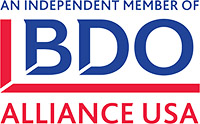Nonprofit organizations play a vital role in society by addressing various social, cultural, and environmental needs. To effectively manage their financial resources, nonprofits must adhere to specific accounting standards, especially in relation to contributions. This article explores the key aspects of accounting for contributions in nonprofit organizations, offering insights into proper recording, reporting, and compliance.
What Are Contributions?
Contributions are donations or gifts received by a nonprofit organization. These may be in the form of cash, goods, or services and are typically given by individuals, corporations, foundations, or government entities. Contributions may be conditional or unconditional. In this article, we will focus exclusively on how to recognize unconditional contributions.
Types of Contributions
Nonprofits must account for various types of contributions, which include:

Cash Contributions
Direct monetary donations.

In-Kind Contributions
Non-cash items such as supplies or services.

Pledges
Commitments to make donations in the future.

Restricted Contributions
Donations with specific limitations on how they can be used.
Accounting Standards for Contributions

In the United States, nonprofit organizations follow standards set by the Financial Accounting Standards Board (FASB). The relevant standards include:
- FASB ASC 958
- Provides guidelines for accounting for contributions received and contributions made by nonprofit organizations.
Accounting Standards for Contributions
- Recognition of Contributions
- Unconditional contributions are recognized as revenue in the period they are received or pledged.
- Multi-year pledges are recognized at the present value of future cash flows.
- Classification
- Contributions are classified as either restricted or unrestricted based on donor-imposed restrictions.
- Restricted contributions must be properly tracked and utilized according to the donor’s specifications.
- Valuation of In-Kind Contributions
- Non-cash donations are recorded at their fair market value at the time of receipt.
Recording Contributions
Steps for Recording Contributions:

Identify the Type of Contribution
Ascertain whether the unconditional contribution is cash, in-kind, restricted, or unrestricted.

Measure the
Contribution
Determine the fair value for in-kind contributions and the present value for pledges.

Record in
Financial Statements
- Record contributions as revenue.
- Ensure proper classification of restricted or unrestricted funds.
Example Journal Entry:
For a cash contribution of $10,000 received with no restrictions:
| Debit: Cash | $10,000 |
| Credit: Contributions Revenue – Unrestricted | $10,000 |
Reporting Contributions
Nonprofits must provide transparency and accountability in their financial reporting. Key considerations include:
- Disclosure of Restrictions: Clearly present any restrictions associated with contributions in the financial statements.
- Statement of Activities: Report contributions as part of the organization’s revenue, categorized by type and restriction status.
Compliance and Internal Controls
Nonprofits should establish robust internal controls to ensure:
- Accurate recording and reporting of contributions.
- Adherence to donor restrictions and accounting standards.
- Regular audits and reviews to maintain financial integrity.
Conclusion
Accounting for contributions in nonprofit organizations requires careful attention to detail and adherence to established standards. By properly managing contributions, nonprofits can ensure they are fulfilling their mission while maintaining the trust and support of their donors.
For further reading on accounting standards for contributions, you may refer to the FASB Accounting Standards Codification available here.
We will be exploring conditional contributions and how they should be recorded in a future article.







